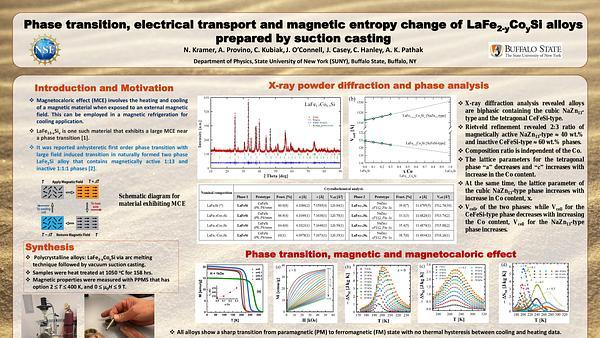Would you like to see your presentation here, made available to a global audience of researchers?
Add your own presentation or have us affordably record your next conference.
Magnetic elastomers can mechanically deform under a magnetic field. Hard magnetic elastomers can perform more complex motions, but soft magnetic elastomers have a greater magnetoaction. 3D printing, such as Fused Deposition Modeling (FDM), can enhance the magnetoactive properties of magnetic elastomers by creating anisotropy. 3D printing filaments are the stock material for FDM. Recent work has shown that magnetic annealing of magnetic filaments during extrusion creates greater magnetoaction in the filaments. This research studies whether this enhanced performance from magnetically annealed filaments remains once they are extruded through the 3D printing nozzle. The composite samples were made of polyurethane and varying amounts of soft and hard magnetic particulate (carbonyl iron (Fe) and strontium ferrite (SrF)). The composites were extruded into 1.75 mm diameter filaments. Magnetically annealed filaments traveled through a uniform axial magnetic field. Final samples were extruded through a 0.8 mm FDM nozzle into extrudates. The magnetoactive properties were measured by a custom setup, whereby extrudates were hung between electromagnets. Images of samples were captured, overlaid, and analyzed at seven field strengths. The enhanced magnetoactive performance of magnetically annealed filaments was present in the final extrudates, indicating that the magnetic annealing effects were preserved. The higher performance magnetic annealing effects were (1) magnetoaction at lower applied fields for the Fe-containing samples and (2) non-zero magnetoaction in the highest SrF samples. Quantitatively, the least magnetoactive deflection was seen in the highest SrF samples. Mechanical tensile testing data showed that the stiffness of the composite variant increased with a higher percentage of SrF. Magnetically, the samples with more SrF content had lower saturation magnetization (Ms) and higher coercive field (Hc). The high stiffness and magnetic properties contribute to the limited magnetoaction. This approach to magnetic annealing of magnetic elastomers can be used to 3D print accurate and complex components for high-performance soft robotic applications.
